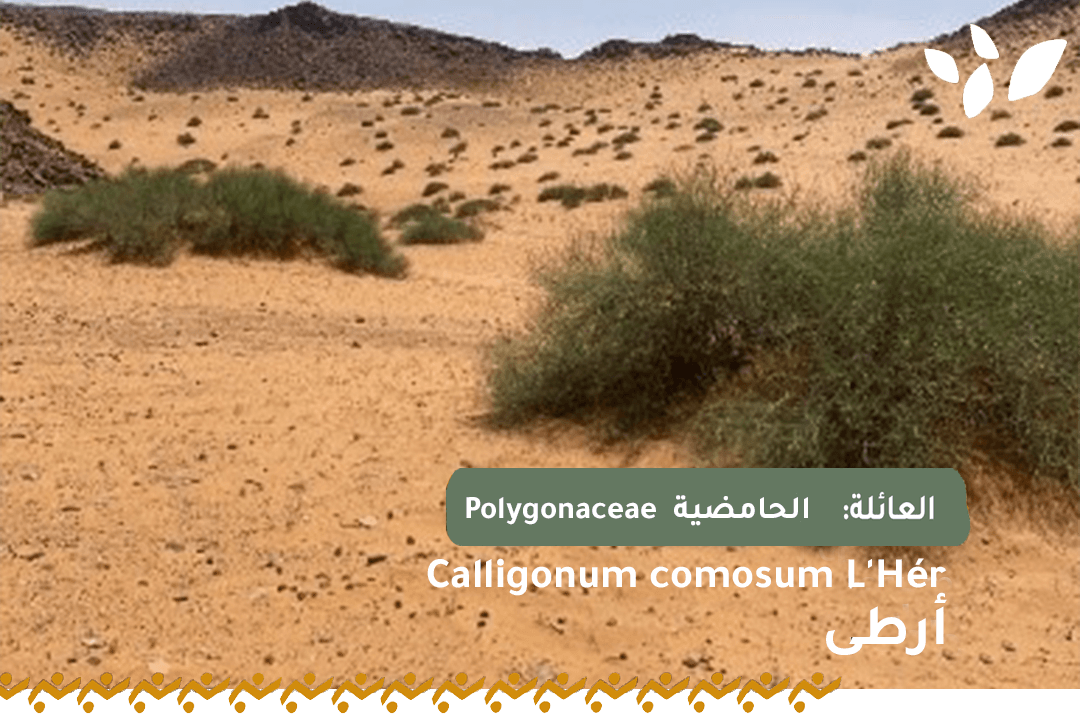A perennial shrub, reaching a height of 70 cm. The lower leaves are alternate and linear, while the upper ones grow in small clusters. The flowers are solitary, small and axillary. The fruits are large, transparent and winged.
- Flowering: June–August
- Distribution within the Reserve: Scattered, most common in Harrat Al-Harrah
- Traditional uses: Grazing plant
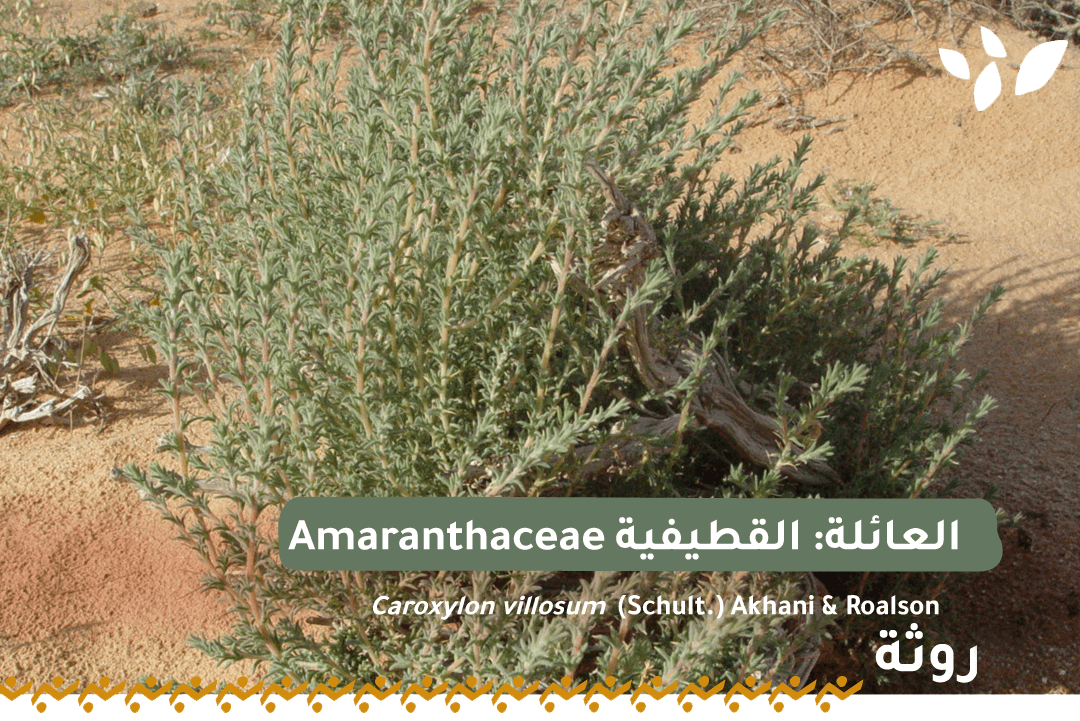
A shrub that can reach a height of more than 3 meters. It is highly branched, with thorny, filamentous branches. The branches have pairs of thorns—one straight and 1 cm long, the other short and hooked. The leaves are oval with entire margins and a pointed tip, about 2 cm in diameter. The inflorescence is limited, with greenish-yellow flowers. The fruits are spherical and reddish, about 7 cm in diameter.
- Flowering: May–August
- Distribution within the Reserve: Limited, found in Hail and Al-Khufnah
- Traditional uses: The plant is used for grazing; its wood is used in various industries, such as the field fencing industry, and it is also used as food.
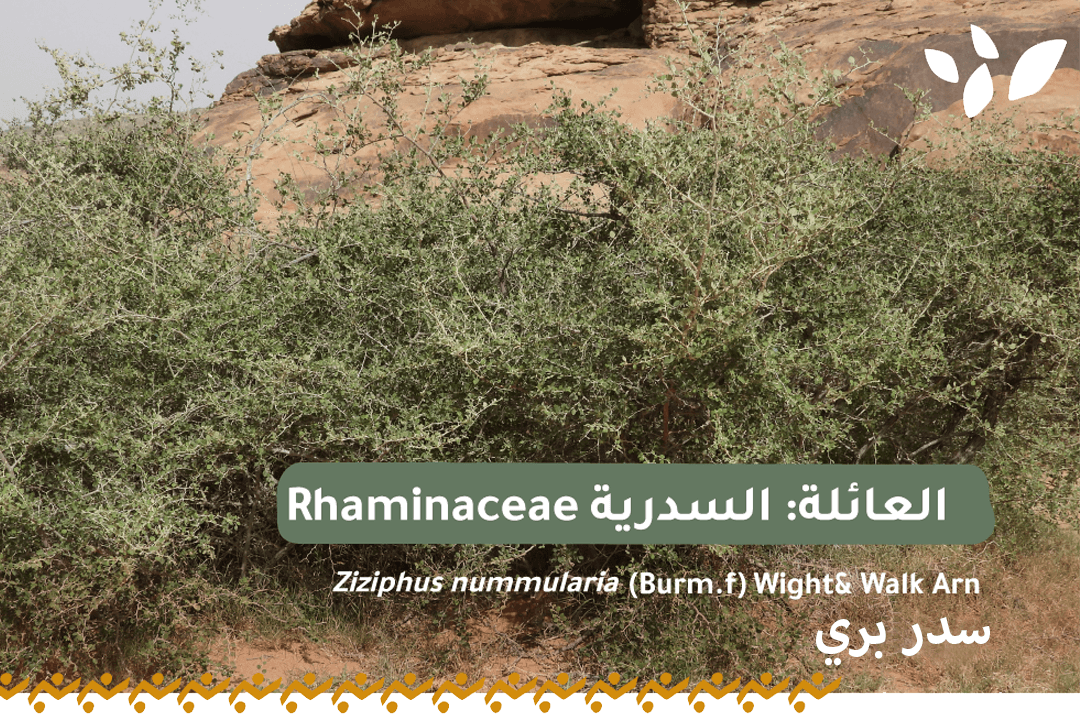
A perennial shrub reaching a height of 70 cm, with woody, intricately branched stems. The branches are thin and whitish. The basal leaves are lanceolate, narrow, and serrated at the edges, measuring 0.3 × 2.5 cm. The upper leaves are small and spaced apart. The flower heads are numerous, small, terminal, and yellow, with a diameter of 1-1.5 cm. The ray florets are short and spaced apart. The involucral bracts are covered with soft spines, and the fruits are about 0.25 cm long.
- Flowering: March–April
- Distribution within the Reserve: Widely spread in the shallow sandy environments in Al-Khunfah and Al-Tubayq
- Traditional uses: The plant is used for grazing, and the young leaves are used in many traditional remedies.
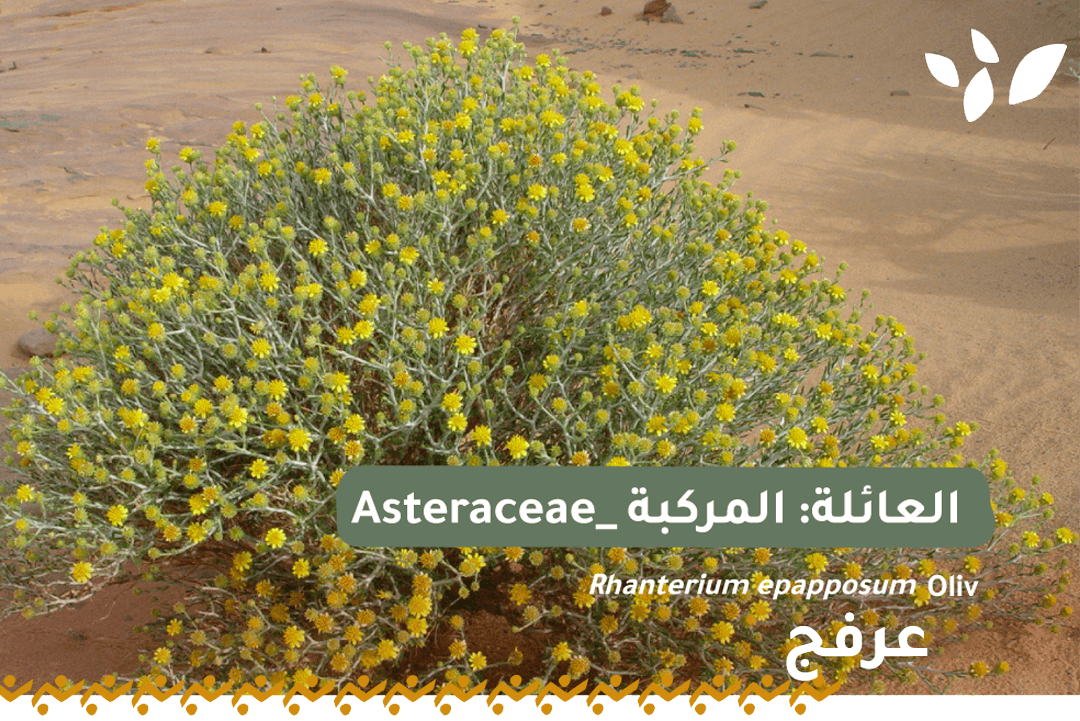
A shrub that reaches a height of about 2 meters, with intricately branched, hard stems. The tips of the branches and side branches are thorny. The leaves are elliptical and spatulate and have short petioles. The flowers are white or purple with a long peduncle emerging from the leaf nodes. The fruit is orange and contains many seeds.
- Flowering: September–April
- Distribution within the Reserve: Limited, found in gravel plains and the sides of hills and valleys in Harrat Al-Harrah, Al-Khunfah, Hail and Al-Tubayq
- Traditional uses: Used as an antiseptic, diuretic, and for treating jaundice and colic. The fruit is edible when ripe. It is also used for grazing.

An erect shrub, about 1.5 meters tall and 1 meter wide. The leaves are small, approximately 2 mm in size. The male cones are yellow and grow in clusters, while the female cones are red fruits with twin black seeds.
- Flowering: March – April
- Distribution within the Reserve: Rare, recorded in the Al-Huj area of King Salman bin Abdulaziz Royal Reserve.
- Traditional uses: Grazing plant
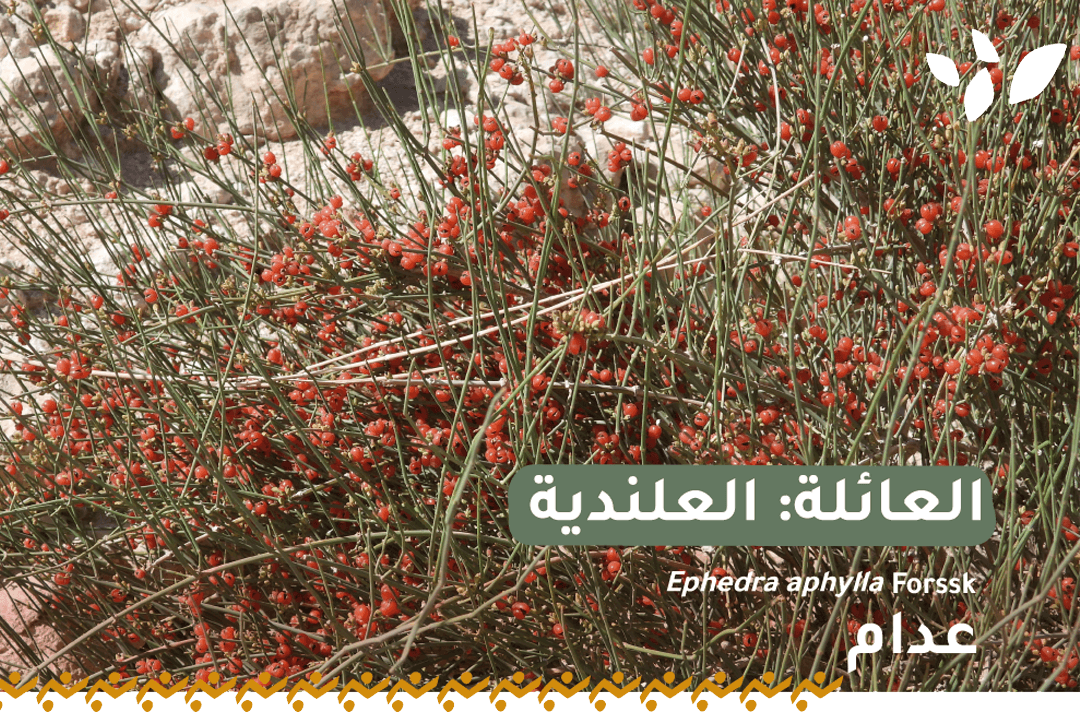
A large perennial shrub, growing between 1 to 4 meters. The mature stems are white, thick, and heavily branched, rarely having a single trunk. The leaves are small, scale-like, and triangular, measuring 0.5-1.5 cm. The flowers are very small and appear on branchlets resembling flower stalks at the joints of side branches. The fruits are winged with a diameter of 0.8 cm.
- Flowering: September – October
- Distribution within the Reserve: Widely spread on sand dunes in Al-Khunfah, Al-Tubayq and Hail.
- Traditional uses: Grazing plant and used as firewood.
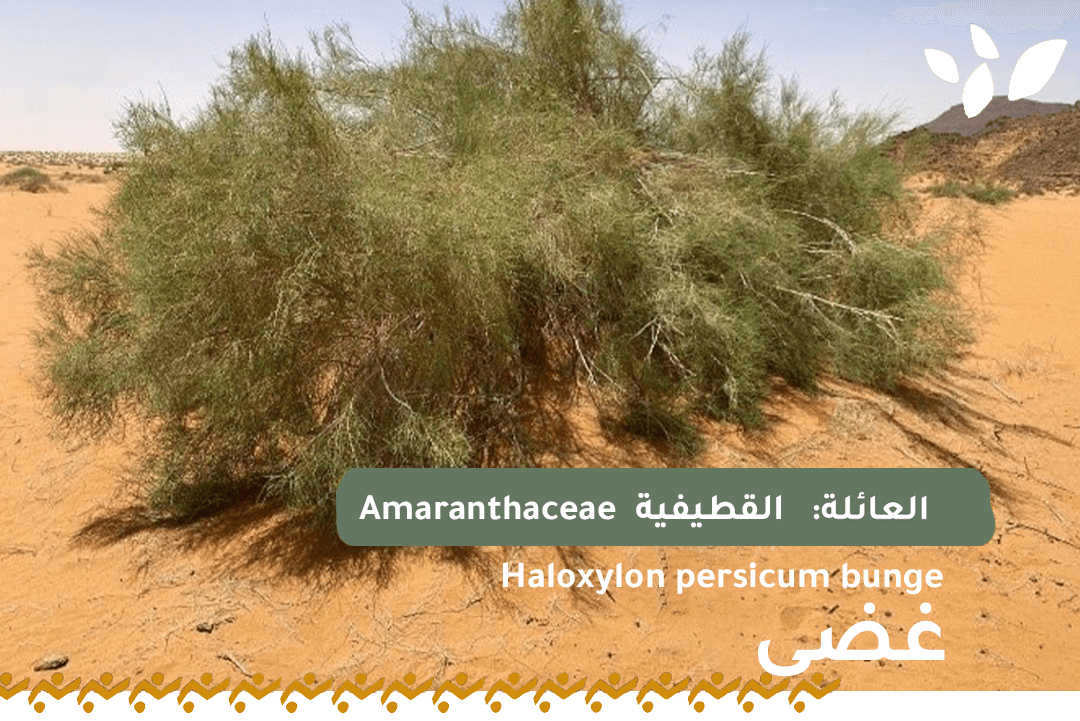
A tree that can reach a height of 10 meters with a main trunk. The crown is flat to rounded or open. The trunk has dark brown bark, and the branches are filamentous with long, hard, straight thorns up to 6 cm long. The leaves are petiolate, divided into 2-8 pairs of pinnae, each containing 10-23 pairs of leaflets. The flowers form a round, creamy-yellow head, 1-1.5 cm in diameter. The fruit is a long, curved pod, about 18 cm in length.
- Flowering: July – September
- Distribution within the Reserve: Limited, found in gravelly valleys in Al-Tubayq, Al-Khunfah and Hail.
- Traditional uses: Grazing plant, eaten by camels and goats.
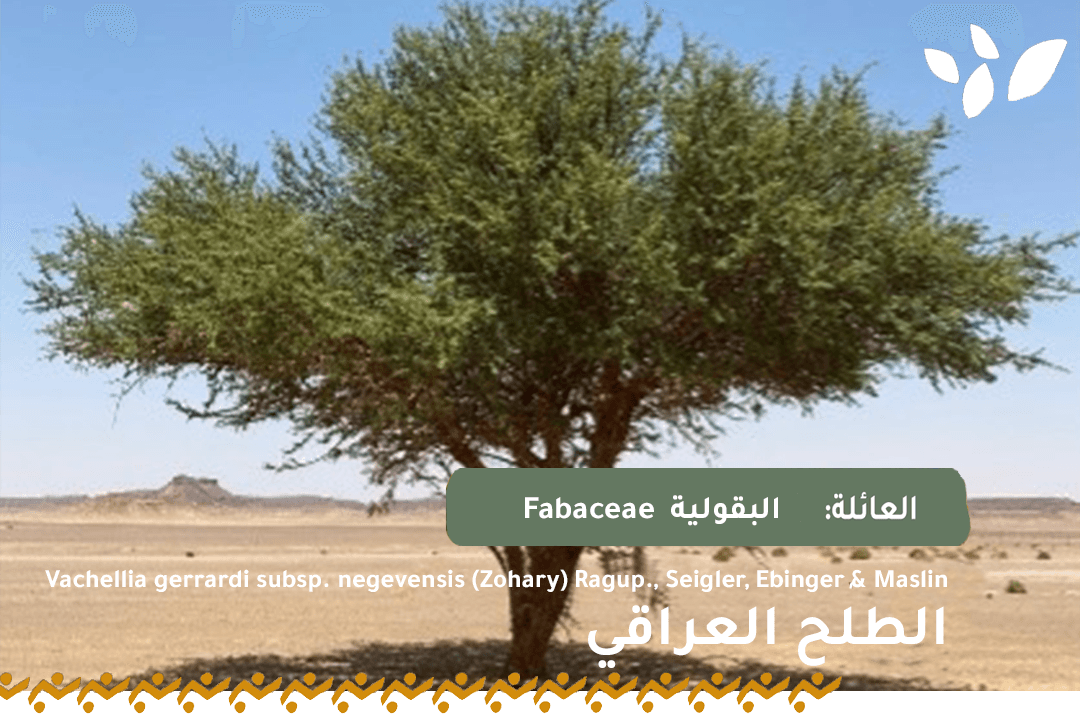
A shrub with a woody base, reaching a height of 2 meters. Its stems are branched, with older branches being hard and covered with gray-white bark, while newer branches are flexible. The leaves are fine and white, falling off quickly. The flowers lack petals and contain red anthers, sometimes grouped together. The fruit is a capsule covered with rough, branched red fuzz, which turns dark when ripe.
- Flowering: March
- Distribution within the Reserve: Widely spread on sand dunes in Harrat Al-Harrah, Al-Khunfah, Al-Tubayq and Hail.
- Traditional uses: Used as a medicinal plant in folk medicine for treating toothaches. Also, it used as animal feed and fuel.
